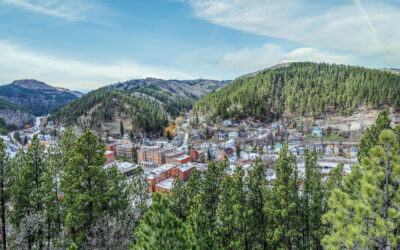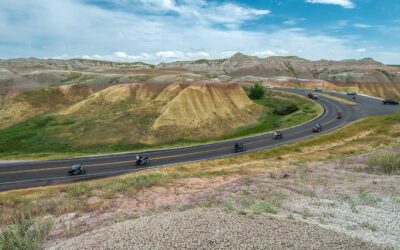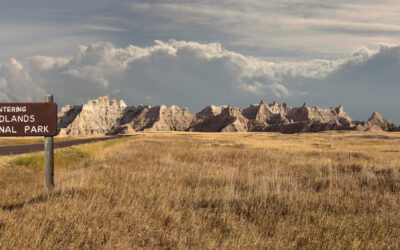Discovering the Treasures of the Black Hills
The Majestic Wildlife and Where to Find Them
The Black Hills of South Dakota are a sanctuary for an array of wildlife, each species playing a pivotal role in the region’s diverse ecosystem. Spotting these creatures in their natural habitat is a thrilling experience, one that requires patience, respect, and a bit of luck. The area’s most iconic residents include the majestic bison, elusive mountain lions, and the playful prairie dogs, each found within the expansive landscapes of the region’s parks and nature attractions.
To maximize your chances of wildlife encounters, consider visiting the renowned Custer State Park, home to a thriving bison population. Here, the Wildlife Loop Road offers a chance to observe these magnificent beasts from the safety of your vehicle. For those keen on spotting a wider variety of species, the trails and open spaces of Mount Rushmore National Memorial provide a habitat for mountain goats, deer, and the occasional mountain lion.
While exploring, it’s crucial to maintain a safe distance from all wildlife and to stay on designated paths to protect both the environment and yourself. For a comprehensive guide to the parks and their inhabitants, refer to the table below, which outlines the top nature attractions and the wildlife commonly found in each location.
| Park Name | Notable Wildlife |
|---|---|
| Custer State Park | Bison, Elk, Prairie Dogs |
| Mount Rushmore Nat. Mem. | Mountain Goats, Deer |
Remember, each visit to the Black Hills is unique, and while wildlife sightings can never be guaranteed, the beauty and serenity of the hills are always present.
Trails and Tales: Hiking with the Local Fauna
The Black Hills offer a unique opportunity for hikers to immerse themselves in the natural world, with trails that cater to all levels of experience. The Cathedral Spires Hiking Trail is a prime example, providing breathtaking views and a chance to encounter the region’s diverse wildlife. Similarly, the Presidential Trail and George S. Mickelson Trail are excellent choices for families, offering both safety and adventure.
When planning your hike, it’s essential to be prepared. Here’s a quick checklist to ensure you have a safe and enjoyable experience:
- Appropriate footwear for the terrain
- Adequate water and snacks
- Map of the trail and compass or GPS
- Weather-appropriate clothing
- Basic first aid kit
Remember, the Black Hills are not just a destination but a journey. Each trail tells a story, and as you walk, you become part of that narrative. Whether you’re seeking solitude or a family-friendly outing, the trails of the Black Hills are ready to unfold their tales before you.
The Birdwatcher’s Paradise: Avian Wonders of the Hills
The Black Hills region is a haven for bird enthusiasts, offering a diverse array of avian species set against the backdrop of lush forests and rugged terrain. Birdwatching in the Black Hills is an activity that can be enjoyed year-round, with each season bringing its own unique set of species and behaviors to observe.
For those keen on spotting the local feathered residents, a well-planned excursion can yield sightings of the majestic Bald Eagle, the melodic Song Sparrow, and the industrious American Robins. Not to be missed are the Bewick’s Wrens, often heard before seen, adding a lively soundtrack to the trails. The Black Hills Audubon Society provides valuable insights and reports from their field trips, which can be a great resource for planning your birdwatching adventure.
To maximize your experience, consider these tips:
- Equip yourself with a reliable pair of binoculars and a regional bird guide.
- Dress in layers and wear comfortable footwear suitable for the terrain.
- Be patient and stay quiet; birds are more likely to appear if you’re not a disturbance.
- Keep a record of your sightings; it can be rewarding to track the variety of species you encounter over time.
Planning Your Wildlife Adventure
Essential Gear for the Black Hills Explorer
Embarking on a wildlife adventure in the Black Hills requires more than just enthusiasm; it demands the right gear. Proper preparation is key to a safe and enjoyable experience amidst the region’s natural splendor. Here’s a rundown of the essentials:
- Navigation tools: A reliable map and compass are indispensable for exploring the Black Hills. Even in the age of smartphones, these traditional tools won’t let you down when service is spotty.
- Binoculars: To truly appreciate the distant wildlife, a good pair of binoculars is a must. They’ll bring the action closer without disturbing the natural behavior of the animals.
- Weather-appropriate clothing: The Black Hills can surprise you with sudden weather shifts. Layering is the strategy here, with moisture-wicking fabrics and a waterproof outer layer.
- Sturdy footwear: Durable, comfortable hiking boots will support your feet over varied terrain, from rocky paths to muddy trails.
While this list is not exhaustive, it covers the basics that will serve you well on your journey. Remember to tailor your gear to the specific activities you plan to undertake and always prioritize your safety and the protection of the wildlife.
Safety First: Tips for Coexisting with Wild Residents
The Black Hills offer an immersive experience with nature, but it’s crucial to prioritize safety while enjoying the company of wild residents. Staying informed and prepared is the cornerstone of a safe wildlife adventure. Here are some essential tips to ensure a harmonious encounter with the region’s fauna:
- Pack in, Pack Out: Leave no trace of your visit to keep the habitat pristine for wildlife and future explorers.
- Stick to the Trail: Designated paths are there to protect both you and the natural environment.
- Be Respectful to Wildlife: Observe from a distance, do not feed, and avoid disturbing the animals.
- Be Prepared: Equip yourself with the necessary gear and knowledge about the wildlife you might encounter.
- Respect Other Hikers: Share the trails and experiences courteously.
- Respect Sacred Places: Recognize and honor the cultural significance of the land.
Familiarize yourself with the resources and highlights of your chosen trail. Knowing the locations of bike shops, cell service areas, and emergency resources can provide peace of mind. Additionally, while the Black Hills trails are not as remote as other routes, it’s wise to be prepared for gear issues or resupply needs. Lastly, always adhere to the guidelines set by the National Park Service and local authorities to ensure your adventure is both enjoyable and respectful of the natural and cultural heritage of the Black Hills.
Best Times and Spots for Wildlife Encounters
Timing and location are crucial for those eager to experience the full spectrum of wildlife in the Black Hills. Early morning and late evening are prime times for wildlife encounters, as many animals are most active during these cooler parts of the day. For a chance to see the majestic bison, elk, and pronghorns, Custer State Park is a must-visit. The park’s Wildlife Loop Road offers a scenic drive with ample opportunities to observe these creatures in their natural habitat.
Bird enthusiasts will find the months of April through July particularly rewarding, as this is the peak breeding season for many species. The Black Hills National Forest, with its diverse ecosystems, is a haven for birdwatchers. Here’s a quick guide to some of the best spots:
- Sylvan Lake: Known for its serene beauty and the chance to spot waterfowl.
- Bear Butte State Park: A place of spiritual significance and home to raptors and songbirds.
- Spearfish Canyon: Offers a dramatic landscape and the sounds of the canyon wren and peregrine falcon.
For those interested in the nocturnal wildlife, such as the elusive mountain lion or the curious raccoon, setting out on trails during dusk can be particularly fruitful. Remember to respect the wildlife by keeping a safe distance and not feeding the animals, ensuring a safe and enjoyable experience for all.






